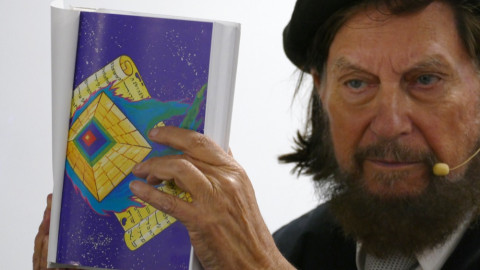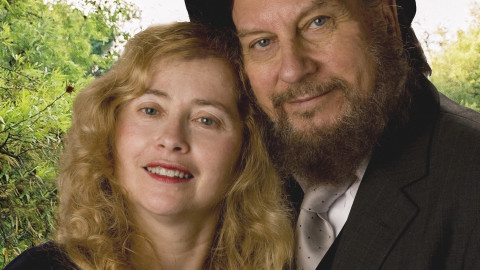BROWN’S GAS
The current theory of Brown’s Gas states that Brown’s Gas is a mixture of di-atomic and mon-atomic hydrogen and oxygen. Brown’s Gas, Book One explains it in detail, but here is a peek.
The simplest way to make Brown’s Gas is to use an electrolyzer, which uses electricity to split water into its elements of hydrogen and oxygen. At the instant that the water splits, the hydrogen and oxygen are in their mon-atomic state, this is H for hydrogen and O for oxygen.
Normal electrolyzers encourage the hydrogen and oxygen to drop to their di-atomic state. Di-atomic means the hydrogen formed H2 and the oxygen formed O2. The di-atomic state is a lower energy state, the energy difference shows up as heat in the electrolyzer. This energy is now unavailable to the flame.
WHAT IF a significant number of these H and O atoms did not reform into di-atomic molecules? We start by adding 442.4 Kcal per mole to split water using electrolysis. This is an endothermic (energy absorbing) action. But if we have no, or little, ‘re-bonding’ into di-atomic molecules, then our electrolyzer wouldn’t heat up, because there would be no exothermic reaction that would cause excess heat, beyond the agitation of the fluid by the bubbles. This ‘lack of heat’ in the electrolyzer is what I noted in my experiments that actually produced Brown’s Gas.
There would also be a significantly larger volume of gas produced by the electrolyzer, well beyond any reasonable expectation of a ‘normal’ electrolyzer. The mon-atomic moles would take up twice the volume that the di-atomic moles for the same weight of water electrolyzed.
Eagle-Research experiments verify this: — not to that efficiency, but much more volume than you could expect by assuming a maximum efficiency to a normal electrolyzer. The math and experiments are well documented in Brown’s Gas, Book One. For a quick example, let’s use the results of an independent test of Brown’s Gas by an engineer named Harald Hanisch.
Mr. Hanisch was Director of Research and Development of Simmering-Graz-Pauker, a large machine-building and railway-car manufacturer owned by the Austrian government. He couldn’t believe that oxygen and hydrogen could be mixed and burned safely and he certainly would not believe that Yull Brown got any 340 liters of gas per kilowatthour. Mr. Hanisch decided to go to Australia to see for himself. He wanted to test for himself the actual input of electricity and the actual output of gas. During his actual testing, with the water displacement method, he found Yull Brown’s machine produced 368 liters per kilowatthour.
Other researcher’s published literature on Brown’s Gas states that 1 liter of water would make 1866.6 liters of Brown’s Gas. Normal di-atomic H2:O2 is 933.3 liters of gas per liter of water and Brown’s Gas displaces more volume than normal because of it’s mon-atomic constituent. The above example proves the volume increase and my experiments with my machines and Yull Brown’s own machines prove it. Further, an old researcher in Brown’s Gas just came up with a further method to prove the volume increase caused by the mon-atomic portion of the gas. He weighed it in a fixed volume at a fixed pressure and temperature.
If we assume that we are getting significant amounts of H and O in our torch gasses, what would happen to them when they burn?
If we had all H and all O, our flame wouldn’t have to be very hot to “self propagate” because the flame wouldn’t have to be putting all that energy into splitting the H2 and O2, before it could burn. So we’d have a “cold” flame, right? And it is universally noted that Brown’s Gas burns with a very low temperature flame.
If we had all H and all O with no H2 and O2, and we reduced straight to water. We would go from a greatly expanded gas to liquid, a reduction of 1860 times, with little of the expansion caused by heat. This would produce quite a vacuum, don’t you think? And if our “flame” was doing this, the reaction would be an “implosion”, right?
And if the H and O went directly into forming water, we’d have (for four moles of H and two moles of O) 442.4 Kcal of available energy, instead of only 115.7 Kcal available from 2H2:O2.
The extra available atomic-level energy could account for some of the strange effects of Brown’s Gas, like sublimating tungsten, which requires temperatures close to those found on the surface of the sun. “Normal” 2H2:O2 flames can’t reach these temperatures.
The special imploding high energy reaction could be tapping unknown effects, explaining some other effects of Brown’s Gas, like its ability to make clean laser-like holes in wood, metal and ceramics. As well as the capability of changing temperature when applied to different materials.
During a Brown’s Gas mon-atomic hydrogen (H) and mon-atomic oxygen (O) flame, we don’t have to add any energy because the molecules are already in their simplest and highest energy atomic form. This means that “perfect” Brown’s Gas can have 3.8 times the possible ‘heat’ energy that an “ordinary” H2 and O2 flame has (442.4 Kcal/115.7 Kcal).
Thus we can get ‘plasma’ type temperatures and effects as we weld, because the potential atomic energy is there, even if it doesn’t show up as heat.
Andrew Michrowski
Planetary Association for Clean Energy




